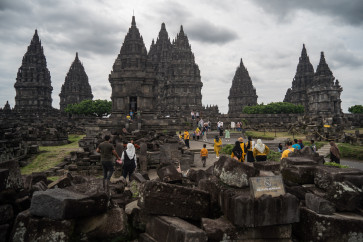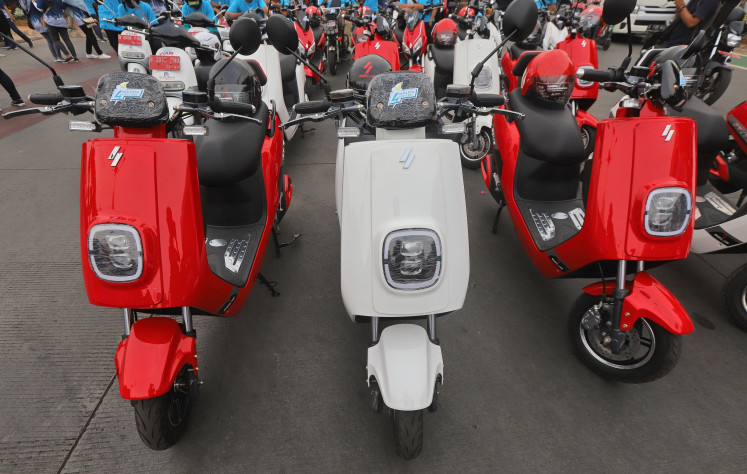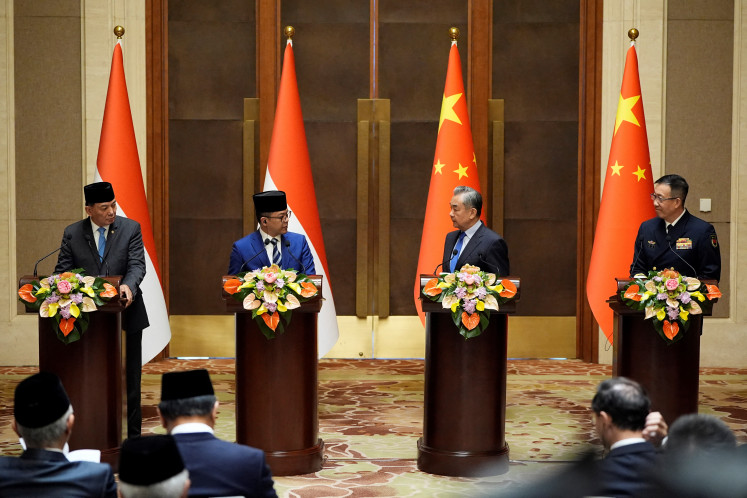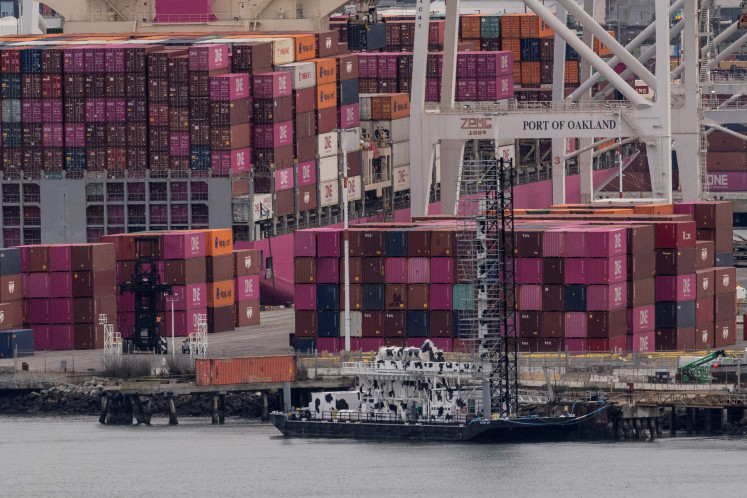Jakarta will sink without NCICD: Bappenas
Bambang Brodjonegoro - JP/Arief SuhardimanJakarta is sinking fast
Change text size
Gift Premium Articles
to Anyone

Bambang Brodjonegoro - JP/Arief Suhardiman
Jakarta is sinking fast. The city is considered one of the fastest sinking cities in the world. Research, mostly done by Dutch consultants, finds that in some places it sinks as fast as 15 to 18 centimeters a year, in most places 3 to 5 cm, and on average about 7.5 cm a year. Millions will be affected by tidal floods in several years if nothing is done. To tackle the problem, the National Development Planning Board (Bappenas) conducted a study on how to best prevent the city from sinking further. The study recommended that the government build a giant seawall under the National Capital Integrated Coastal Development (NCICD) project to give Jakarta a chance of surviving. The study claims reducing ground water extraction is not enough. The Jakarta Post’s Indra Budiari recently spoke with Bappenas head Bambang Brodjonegoro on the latest developments in the project.
Question: What is the result of Bappenas’ study into the NCICD?
Answer: It is evident that land in Jakarta is subsiding faster than our prediction because of two reasons. The first reason is a geological factor caused by movement on the seabed. The second is human problems triggered by the large consumption of ground water.
Our suggestion to the President is that we need to build 20 kilometers of beach embankment so that Jakarta can survive from tidal floods due to land subsidence until 2025 for the first phase. After that, we need to study if the embankment is enough to prevent floods in the longer term. Otherwise, we have to build a giant seawall as proposed by the Dutch in their NCICD plan for the next phase.
The difference between the beach embankment and the giant seawall, among other things, is that the embankment is going to be built quite close to the beach and will be focused on the areas that are prone to flooding, while the seawall site is further north from the beach.
So does this mean the construction of the giant seawall is optional and will depend on the results from the beach embankment?
Yes, it does. As long as we are sure that there will be no tidal floods in Jakarta’s North Bay, and land subsidence is not as fast as the current level, [then we do not need to build the seawall]. However, as a good planner, we need to prepare for the worst. Global warming shows no sign of stopping and neither does the land subsidence.
The giant seawall project has been heavily criticized. Activists and academics say that we need to focus on reducing ground water extraction first instead of executing this mega project. What’s your take on that?
The floods are already happening every year, with Jakarta’s northern bay being the most affected area. I agree that reducing ground water extraction is necessary, but it will not raise the ground to a normal level. Therefore, as we solve this ground water issue, we need to build the beach embankment to reduce the flood.
We need to understand that solving ground water exploitation issues is not a walk in the park. The current infrastructure is not enough to serve residents in Jakarta with tap water. A lot of residents in West Jakarta cannot get tap water because the water pipes do not reach their location, leaving them with no choice but to consume ground water. The same condition applies to high-rise buildings. They cannot rely on tap water because the supply will not meet demand.
The giant seawall construction will also help tackle water supply issues. The sea between the land and the seawall can be used to supply water if we use modern technology to filter the water.
Another criticism of this project is that it is likely to affect the livelihoods of fishermen. How do you respond to that?
Our giant seawall is slightly different from the NCICD project proposed by the Dutch government. Dutch’s NCICD would completely isolate the area, while ours provides some canals for fishermen to go out to the sea. With these canals, they will be able to catch fish and their existence will not be threaten by the project.
Is the government’s NCICD project related to the controversial Jakarta Bay reclamation project, which includes the construction of 17 artificial islets?
No. There is a wide misconception that the two are related or even that the reclamation project is a part of NCICD. This is a misunderstanding. While NCICD’s main objective is to prevent floods, the aim of the reclamation project is merely to add more land.
We have prepared the NCICD project with two different scenarios: with reclamation land nearby, or not. However, we have not undertaken any studies into reclamation. It is completely under the authority of the Jakarta administration.









